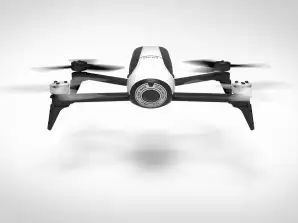Sign up for FREE Newsletter - stay up to date!
Don't miss the daily updates on new products and news on Merkandi. Receive discount code for registration.
PzKpfw II (Panzerkampfwagen II) was a German light tank from the period of World War II. The first prototypes of the vehicle were created in 1934, and mass production continued from 1935 to 1944, ending with the manufacture of approximately 1850 vehicles. The tank in version A was powered by a single Maybach HL 57 TR engine with an output of 130 horsepower. Its armament consisted of 1 KwK 30 cannon of 20 mm caliber and 1 MG 34 machine gun of 7.92 mm caliber mounted in the turret. PzKpfw II was developed as a result of a competition announced by the German Weapons Office for a light tank weighing up to 10 tons armed with a 20 mm cannon. This competition was won by the company MAN, in cooperation with the company Daimler-Benz. Mass production began in 1935, and during its course, numerous variants of the PzKpfw II tank were created. Chronologically, the first was version A, which was however produced in relatively small numbers. Shortly after, version B was produced, which already had a new, more powerful engine and a modified chassis. Already in 1937, version C emerged, which had fundamentally changed chassis and reinforced front armor of the hull. At the end of 1940, version F was created, which had stronger armor and a better transmission compared to version C. In 1942, the production of version L (Luchs) began, which had a completely new chassis, a new engine with an output of 180 horsepower, and significantly increased the maximum speed from 40 km/h to 60 km/h. On the chassis of the PzKpfw II tank, numerous other vehicles were also developed, such as the self-propelled howitzer Wespe or the tank destroyer Marder II. PzKpfw II tanks were used on almost all fronts of World War II, and from 1942 they were designated for secondary tasks.








Don't miss the daily updates on new products and news on Merkandi. Receive discount code for registration.